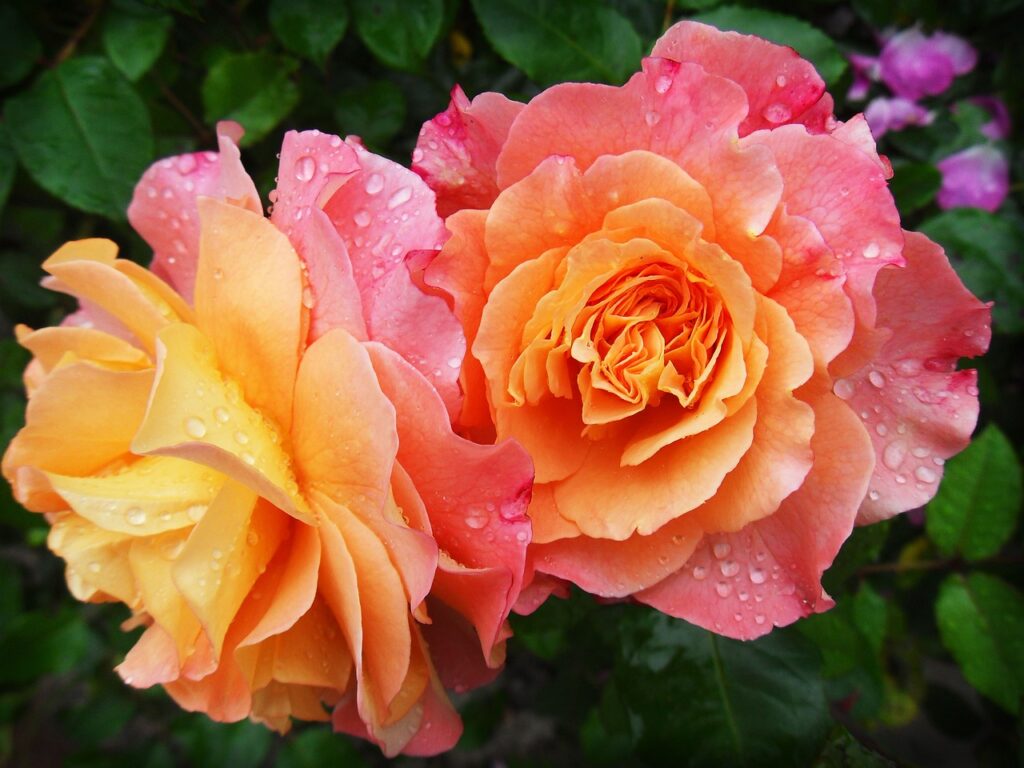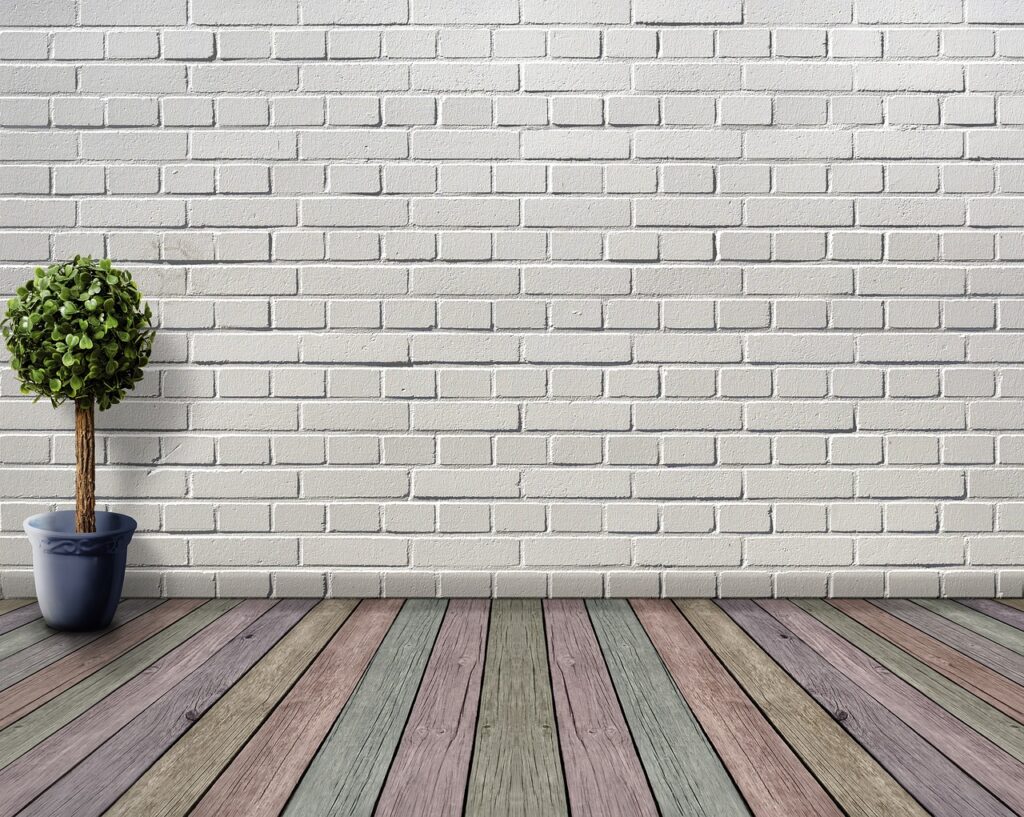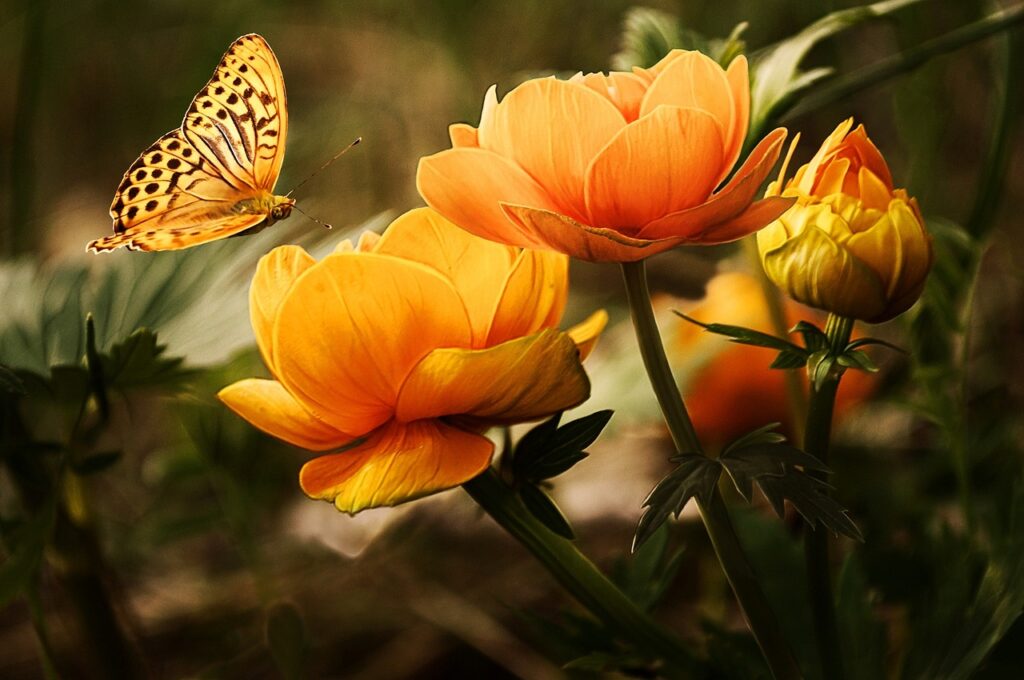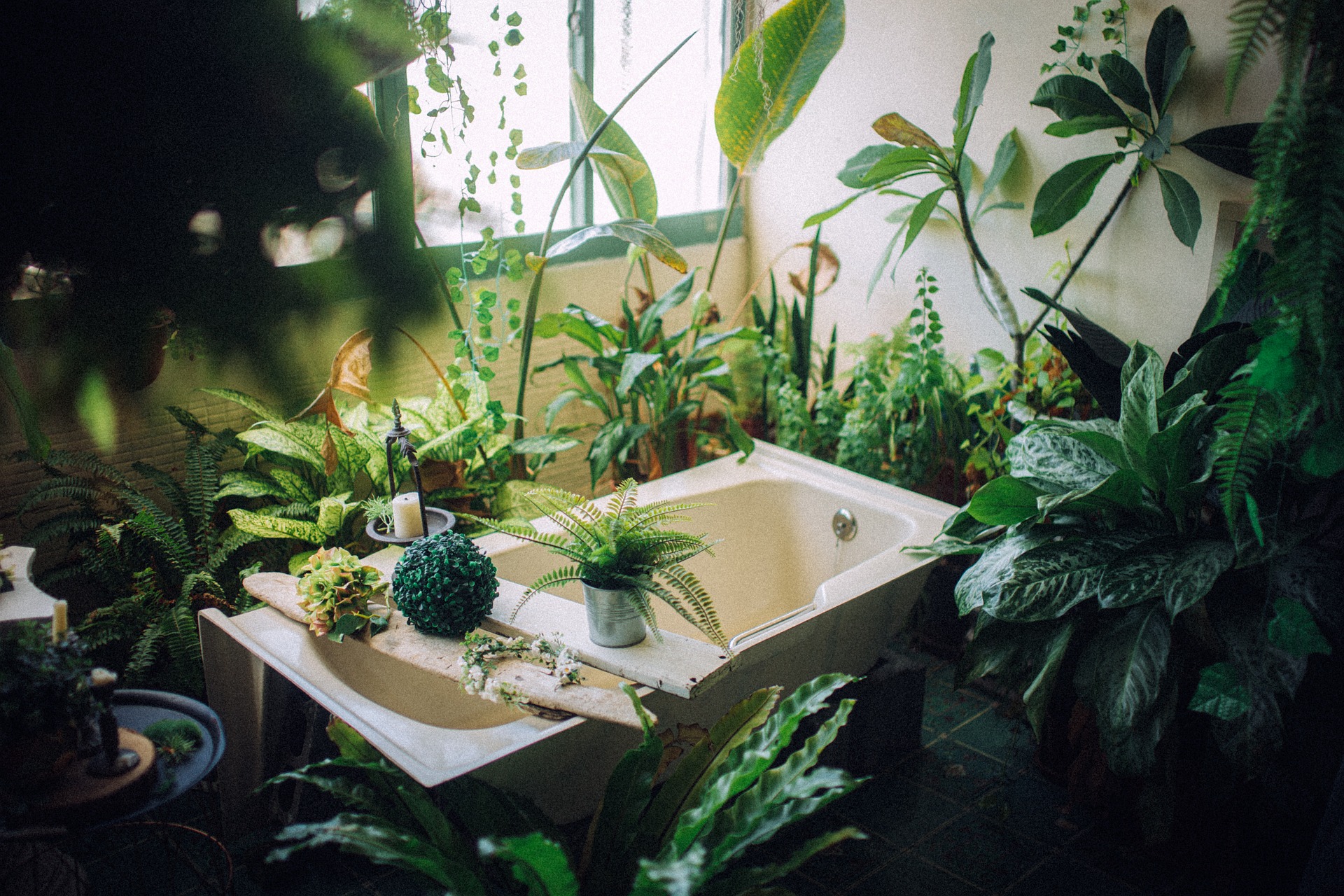How Do Plants Help In Reducing Indoor Pollution: Introduction
How do plants help in reducing indoor pollution? This compelling question serves as a cornerstone in the intersection between environmental science and public health.
Indoor plants do more than just brighten up a room with their beauty; they also play a pivotal role in enhancing indoor air quality. From your home to your office, these green allies are silently working to make your spaces healthier.
Leveraging a natural process known as phytoremediation, plants can absorb harmful pollutants. These include volatile organic compounds (VOCs), chemicals commonly found in household cleaning products and paints, as well as carbon dioxide and mold spores.
By strategically placing a variety of plants in different areas of your indoor space, you can create a more effective air purification system. This is not just beneficial for your physical well-being but is also proven to improve mental health by reducing stress and enhancing mood.
So, as we dive into this topic, we’ll uncover the scientific intricacies that enable plants to be such formidable allies in the fight against indoor pollution.
Introduction
Indoor pollution is a concerning problem that affects air quality within our homes and workplaces. Poor air quality can have detrimental effects on our health and well-being, leading to respiratory issues, allergies, and other health problems. However, there is a natural and effective solution to combat indoor pollution – plants. Not only do they add beauty and greenery to our indoor spaces, but they also serve as remarkable air purifiers. In this article, we will explore how plants improve air quality, the mechanisms behind pollution reduction, the best plant varieties for indoor pollution reduction, the impact on human health, and other benefits of indoor plants. We will also provide essential tips for plant care and maintenance, as well as potential limitations and precautions to consider. By the end of this article, you will gain a comprehensive understanding of how plants can help in reducing indoor pollution and how to maximize the benefits they offer.
1. Natural Air Purifiers
1.1. Function of plants in improving air quality
Plants play a crucial role in improving indoor air quality by effectively removing harmful pollutants from the environment. Through a process called photosynthesis, plants absorb carbon dioxide and release oxygen, helping to refresh and purify the air. They also absorb various pollutants, such as volatile organic compounds (VOCs), formaldehyde, benzene, and xylene. Moreover, plants release moisture into the air, increasing humidity levels and promoting a healthier indoor environment.
1.2. Types of pollutants removed by plants
Plants have the unique ability to filter out a wide range of indoor pollutants. Some common indoor pollutants that plants can effectively remove include formaldehyde, which is often found in furniture, carpets, and household cleaning products. Benzene, found in gasoline, tobacco smoke, and plastics, can also be eliminated by certain plant species. Additionally, xylene, a solvent used in printing, rubber, and leather industries, can be efficiently reduced with the help of plants. By choosing the right plant varieties, you can effectively tackle these pollutants and create a cleaner and healthier indoor environment.

Check Out Our Top Eco Friendly Product Picks On Amazon Here
2. Mechanisms of Pollution Reduction
2.1. Absorption through leaves
Plants possess tiny openings on their leaves called stomata, which allow them to absorb gases from the surrounding air. Through this process, known as foliar absorption, plants can take in pollutants such as VOCs and other harmful gases. The larger the leaf surface area, the more effectively a plant can absorb pollutants, making broad-leafed plants particularly useful for this purpose.
2.2. Breakdown in roots and soil
In addition to absorbing pollutants through their leaves, plants also play a vital role in reducing pollution through their roots and the soil in which they are planted. Once the pollutants are absorbed by the roots, they can undergo processes such as microbial degradation and chemical breakdown, resulting in their neutralization or transformation into less harmful compounds. This mechanism demonstrates the incredible ability of plants to detoxify the soil and contribute to a cleaner and healthier environment.
2.3. Volatile Organic Compounds (VOCs) trapping
Volatile Organic Compounds (VOCs) are organic chemicals that can have adverse effects on human health. Plants have the capability to trap and store these VOCs within their tissues, preventing them from being released into the air. This trapping mechanism is particularly effective in reducing pollution from household products, paints, and cleaning agents that contain VOCs. By having these plants in our indoor spaces, we can significantly enhance air quality and reduce the negative impact of VOCs.
2.4. Microbes in the rhizosphere
The rhizosphere is the soil area surrounding a plant’s roots, and it is teeming with microorganisms such as bacteria and fungi. These microorganisms actively contribute to pollution reduction by breaking down pollutants and converting them into less harmful substances. The plant roots excrete substances that promote the growth of these beneficial microbes, creating a mutually beneficial relationship. This natural process further emphasizes the essential role that plants play in reducing indoor pollution.
3. Plant Varieties for Indoor Pollution Reduction
3.1. Top indoor air-purifying plants
Not all plants are equally effective when it comes to purifying indoor air. Some plants excel at removing specific pollutants due to their unique characteristics. Here are some of the top indoor air-purifying plants:
- Snake Plant (Sansevieria): Known for its ability to filter out formaldehyde and xylene, snake plants are easy to care for and can thrive in various light conditions.
- Peace Lily (Spathiphyllum): This elegant plant helps eliminate pollutants like benzene, trichloroethylene, and ammonia. It also adds a touch of beauty with its white flowers.
- English Ivy (Hedera helix): English Ivy is excellent at removing airborne mold and can also reduce airborne particles. It’s a great choice for those with allergies or asthma.
- Spider Plant (Chlorophytum comosum): Spider plants are champions at removing formaldehyde and xylene. They are hardy, adaptable, and produce cascading foliage.
3.2. Factors to consider when selecting plants
When selecting plants for indoor pollution reduction, it is essential to consider various factors:
- Plant size: Choose plants that fit well within your space, as some indoor air-purifying plants can grow quite large.
- Lighting conditions: Different plants have different light requirements. Ensure you select plants that can thrive in the available light levels in your indoor space.
- Maintenance needs: Consider your ability to care for the plants. Some plants require more care and attention than others.
- Pet safety: If you have pets, make sure to choose non-toxic plant varieties to ensure their safety.
By taking these factors into consideration, you can select the right plants that suit your space and contribute significantly to indoor pollution reduction.

4. Impact on Human Health
4.1. Improvement in indoor air quality
By utilizing plants as natural air purifiers, indoor air quality can be substantially improved. With the removal of pollutants such as VOCs, formaldehyde, and benzene, the air we breathe becomes cleaner and healthier. This improvement in air quality can have substantial positive effects on our overall well-being.
4.2. Reduction in respiratory issues
Indoor air pollution is a significant contributor to respiratory issues such as allergies, asthma, and other respiratory diseases. Plants help reduce these risks by removing allergens and other air pollutants. By having indoor plants, you can create a healthier environment that promotes better respiratory health.
4.3. Mental and emotional benefits
In addition to the physical health benefits, indoor plants also have positive effects on our mental and emotional well-being. The presence of plants indoors can reduce stress, anxiety, and depression, promoting a sense of calm and well-being. Interacting with plants, such as watering and caring for them, can also provide a therapeutic experience and improve our overall mood.
5. Other Benefits of Indoor Plants
5.1. Increased humidity
Plants release moisture vapor through a process known as transpiration. This natural mechanism increases the humidity levels in indoor spaces, which is particularly beneficial in dry environments or during the winter months when indoor humidity tends to be lower. Adequate humidity can reduce respiratory irritation, alleviate dry skin, and even reduce the occurrence of respiratory infections.
5.2. Noise reduction
Indoor plants have been found to absorb and diffract sound, effectively reducing noise levels. This is especially valuable in busy urban environments or spaces with excessive background noise. By including plants in your indoor spaces, you can create a more serene and peaceful environment, contributing to better concentration and overall well-being.
5.3. Aesthetic appeal
Aside from their air-purifying abilities, indoor plants also enhance the aesthetic appeal of any space. The vibrant colors, intricate patterns, and unique shapes of plants can add a touch of natural beauty and create a more welcoming and visually appealing atmosphere. Plants can serve as eye-catching focal points or be used to create lush greenery throughout your indoor spaces.

6. Maintenance and Care of Indoor Plants
6.1. Proper watering techniques
Watering indoor plants can be tricky, as different plants have varying water requirements. It’s crucial to avoid overwatering or underwatering, both of which can harm your plants. Generally, it is best to allow the soil to dry slightly between waterings and ensure proper drainage to prevent root rot. Remember to water your plants thoroughly, allowing excess water to drain away. Observe and adjust watering frequency based on the specific needs of your plants.
6.2. Light and temperature requirements
Light and temperature play significant roles in the growth and health of indoor plants. Most indoor air-purifying plants thrive in bright, indirect light. Ensure that your plants are placed near windows with filtered light or invest in artificial grow lights if natural light is limited. Additionally, maintain a suitable temperature range for your plants, avoiding extremes that can stress or damage them.
6.3. Choosing the right potting soil
Choosing the correct potting soil is essential for the well-being of your indoor plants. Use a well-draining potting mix that retains moisture without becoming waterlogged. Depending on the plant species, you may need to consider soil pH and specific soil amendments to provide ideal growing conditions.
6.4. Regular pruning and cleaning
Regular pruning and cleaning contribute to the health and aesthetics of your indoor plants. Remove dead or yellowing leaves, which can harbor pests or disease. Pruning also helps to control the size and shape of your plants, ensuring they continue to thrive within the available space. Additionally, gently clean the leaves of your plants to remove dust and maintain their ability to photosynthesize effectively.
7. Tips for Maximizing Indoor Plant Benefits
7.1. Placement of plants
Strategically placing plants throughout your indoor space can maximize their air-purifying benefits. Consider placing plants near areas that are more prone to pollutant exposure, such as near windows, air vents, or areas with chemical emissions. By doing so, you can effectively control and reduce the levels of pollutants in your immediate environment.
7.2. Grouping of plants
Grouping plants together can create a microclimate that enhances humidity levels and boosts their air-purifying effects. The moisture released by one plant can be absorbed by neighboring plants, creating a mini indoor ecosystem that benefits all the plants involved. Furthermore, grouped plants create a visually appealing display, bringing life and color to your indoor space.
7.3. Avoiding chemical pesticides
To maintain the health and effectiveness of indoor plants, it is advisable to avoid using chemical pesticides. Instead, opt for natural alternatives, such as insecticidal soaps or neem oil, to control pests. Regularly inspect and monitor your plants for signs of pests or diseases, and take the necessary steps to address any issues promptly.
7.4. Regular monitoring and evaluation
Regularly monitoring and evaluating the health and well-being of your indoor plants is crucial for their long-term success. Pay attention to any changes in growth, leaf color, or general appearance, as these can be indicators of specific issues. Adjust care routines, lighting conditions, or watering techniques as needed to ensure the optimal growth and health of your plants.

8. Potential Limitations and Precautions
8.1. Allergic reactions to plants
While indoor plants offer numerous benefits, some individuals may be allergic to certain plant species. Common allergens include pollen, dust, and airborne particles released by plants. If you or anyone in your household has known allergies, it is essential to research and select plants that are less likely to trigger allergic reactions.
8.2. Toxicity of certain plant species
It is crucial to be aware that some indoor plants can be toxic to pets or children if ingested. Species such as lilies, philodendrons, and dieffenbachias are toxic and should be avoided in households with pets or small children. Always research plant toxicity levels and choose safer alternatives if necessary.
8.3. Overwatering and root rot
Overwatering can be a common mistake made by indoor plant owners. Excessive water can lead to root rot, a condition where the plant’s roots become waterlogged and start to decay. To prevent overwatering, ensure proper drainage and allow the soil to dry out slightly between waterings.
8.4. Pet safety precautions
If you have pets, it is essential to consider their safety when selecting and caring for indoor plants. Some plants can be toxic if ingested by cats, dogs, or other animals. To ensure pet safety, choose non-toxic plant varieties, or keep plants out of reach of curious pets. If you suspect your pet has ingested a toxic plant, contact your veterinarian immediately.
Understanding Indoor Pollution Sources
Household Products and Indoor Pollution
Many everyday household products such as cleaners, paints, and personal care items contain volatile organic compounds (VOCs). These compounds can contribute to indoor air pollution and have a negative impact on health.
Combustion Appliances
Combustion appliances like stoves, heaters, and fireplaces can release harmful substances like carbon monoxide and nitrogen dioxide. Proper ventilation is essential to mitigate their impact, but plants can also play a role in filtering these toxins.
The Importance of Respiratory Health
Chronic Respiratory Conditions
Poor indoor air quality can exacerbate existing chronic respiratory conditions like asthma and chronic obstructive pulmonary disease (COPD). Plants can act as natural air purifiers, making breathing easier for those suffering from these conditions.
Allergens and Irritants
Allergens such as pollen, dust, and pet dander can accumulate in indoor settings. Plants like the Peace Lily and Boston Fern are particularly effective at capturing and neutralizing these airborne particles, contributing to a healthier indoor environment.
Plant-Induced Humidity
Plants release water vapor during transpiration, which can help maintain indoor humidity levels. Adequate humidity can help alleviate symptoms of respiratory issues and can create a more comfortable living environment.
Mental Health Benefits of Reduced Indoor Pollution
Improved Cognitive Function
Studies have shown that better air quality can improve cognitive function. The air-purifying abilities of plants can indirectly help you think more clearly and improve your productivity.
Stress Reduction
The psychological benefits of interacting with nature, even in the form of house plants, can reduce stress and promote well-being. When combined with the direct benefits of improved air quality, this can make a significant difference in mental health.
Aesthetic Value
Besides their air-purifying qualities, plants also offer aesthetic value that can enhance your living space, contributing to an overall sense of well-being.
How do plants help in reducing indoor pollution: Conclusion
How do plants help in reducing indoor pollution? As we’ve explored, they serve as powerful, natural air purifiers that do far more than just adorn our living spaces. These green allies actively absorb pollutants, breaking down harmful toxins like VOCs and making our indoor environments more breathable and healthier.
Indoor plants provide a host of benefits that extend beyond air purification. They can mitigate respiratory issues, elevate our mental well-being, and even contribute to increased humidity and noise reduction. The visual appeal they add is an added bonus, transforming any space into a more inviting environment.
However, the efficacy of these plants isn’t automatic. Proper care, including the right lighting conditions, watering techniques, and thoughtful plant selection, is crucial for maximizing their pollution-reducing potential.
While it’s true that there are some limitations and precautions to consider—such as potential toxicity to pets or the need for adequate sunlight—the advantages overwhelmingly tip the scale in favor of incorporating plants into our indoor spaces.
So, if you’re considering bringing a piece of nature indoors, know that you’re making a decision that offers numerous benefits. Your health and well-being, along with the quality of your indoor environment, will undoubtedly thank you for it.




